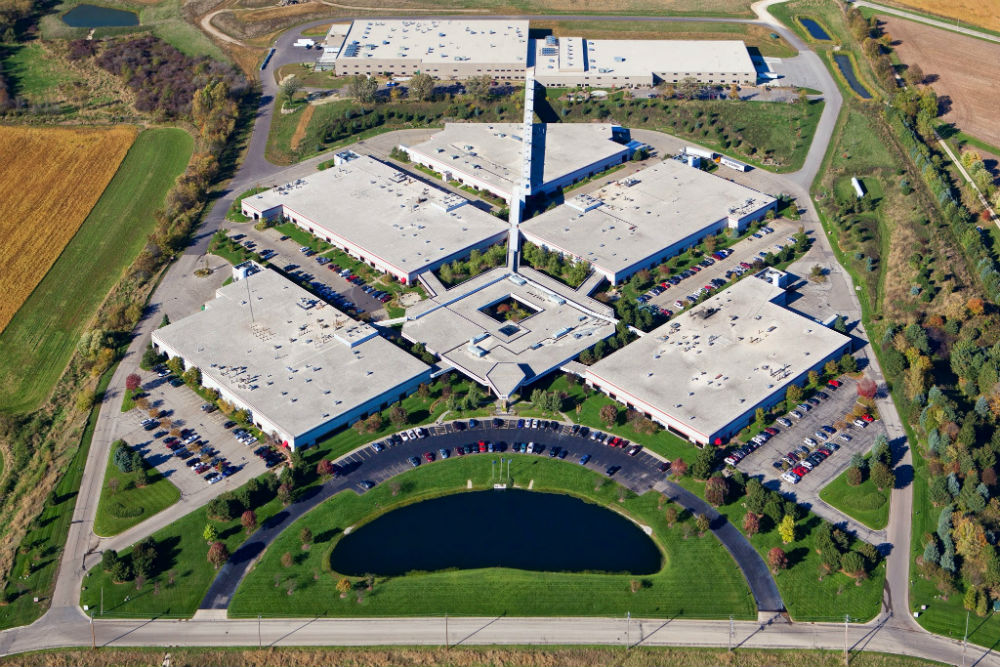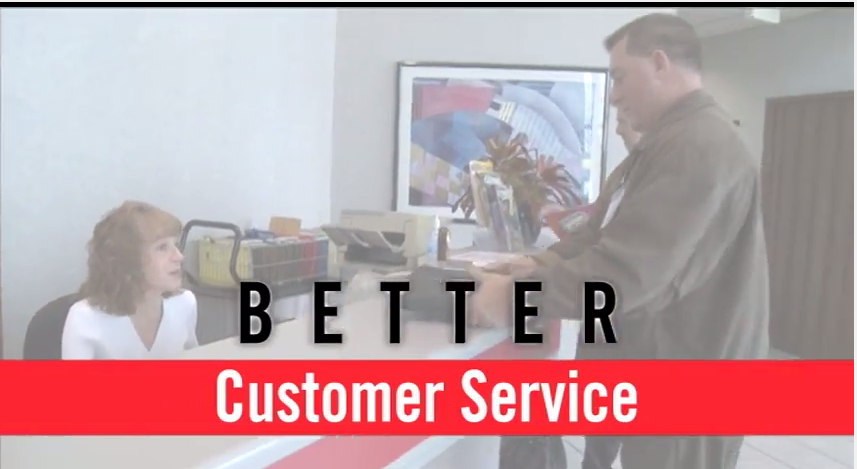Work-In-Progress With RFID

Signicast Investment Casting shows us that RFID integration is not an overnight process but has changed their casting plants for the better.
Signicast Investment Casting is a U.S. based casting house that specializes in ferrous and non-ferrous types of steel. Located in Wisconsin, Signicast is the largest, most technically advanced investment casting house in the world. On a daily basis, over 50,000 pieces of steel are going through the casting process in one of their eight plants. Signicast ships an estimated 2 million finalized steel pieces per month from either the plant in Brown Deer, Wisconsin or one of the seven plants in Hartford, Wisconsin.
The investment casting process, which has been around for hundreds of years, is capable of creating intricate, accurate shapes used in hundreds of different applications. Companies all over the world use casted components in thousands of sizes, shapes, and forms. Due to each job’s unique specifications, the casting process is an extremely complex undertaking. Within each plant, the casting process is essentially the same, but each plant has their own unique way of producing the castings. Because of the labor intensive process, Signicast has outgrown most manual processes and has turned to automation in order to reduce cost and time. Below is a brief overview of Signicast’s casting process.
THE CASTING PROCESS
- The customer provides a computer design, or works with the casting company to design the necessary part.
- The casting house makes an aluminum die to replicate the computer design per specifications.
- Wax is injected into the die, and the wax replica is cooled and assembled to make a mold.
- The wax mold is then immersed into various dipping cells coating it with materials ultimately forming a hard ceramic shell around the wax.
- The mold proceeds into an autoclave to melt all the wax out of the ceramic mold.
- The ceramic mold then goes into a burnout oven and is heated up to 1800° which prepares it for the metal as well as burns out any excess wax.
- The metal is then heated up to 3000° and poured into the hollow ceramic mold. It is then put in a sandbox and covered for a cool down time of on average an hour.
- The entire part goes through a process in order to remove the ceramic mold.
- When the ceramic is off, the parts are then removed from the mold and put into totes.
- The totes with parts then go to a finishing area for inspection, or if necessary, the totes are put through any secondary operations that the customer specified such as heat treating, plating, or painting.
- The totes are then delivered to the shipping department to go to the customer.

Signicast’s facility in Hartford, Wisconsin
MAKING CHANGES
In order to automate some of the manual processes required, Signicast has implemented RFID technology in all their plants. Signicast uses RFID primarily for work-in-progress, such as tracking and managing the thousands of steel castings moving in and out of each plant. These castings vary in size from an ounce all the way up to hundreds of pounds. In order to transport the castings around the large facilities, Signicast uses plastic totes that, depending on the size of the castings, can contain one large casting or hundreds of tiny metal castings. Due to the extreme heat and processes, tracking individual steel castings throughout the entire casting process proves to be an impossible task. To get around the unique hurdle, Signicast instead focused on tracking the plastic totes containing the steel castings. RFID generally works well with plastic materials, but Signicast discovered they were just starting down the road to RFID nirvana.
RFID: ROUND 1
In 2006, Signicast started researching RFID technology and ultimately implemented a pre-existing, all-in-one RFID system to track their Matchtotes. The customized system was developed and implemented in-house and provided a stricter way to manage all the totes filled with castings. Unfortunately, this system did not last long. The system’s methodologies worked for one plant, but when Signicast attempted to implement RFID in its other plants, the different tote sizes presented an unexpected problem. The system was based on near-field RFID with limit switches and laser eyes that trigger reads based on movement.
While Signicast was busy trying to alter infrastructure in order to comply with the software system, the RFID tags began falling off the totes and were scattered all over the facilities. Whether it was the epoxy failing, or the drilled holes not holding up against the wear and tear, the bulky, disk-shaped near-field tags were failing. Not wanting to give up on RFID being the solution, the team at Signicast began looking into building a UHF RFID hardware and software system of their own.
RFID: ROUND 2
In 2013, Signicast began developing the UHF RFID system that would replace the near-field system. Working with a few employees from Alien Technologies, Signicast was able to design a system that would give them the desired results. It wasn’t an easy task as the company was told that they were basically “in RFID hell” due to all the metal machinery, castings, and metal infrastructure throughout the facilities. In spite of the RF challenges and after many hours of testing, the team had determined the required hardware setup. Signicast then used in-house developers to create a custom software solution that would fit their needs.With their Alien ALR-9900+ and ALR-9680 readers, they installed Laird S9025PR antennas, Impinj Guardrail and Matchbox antennas, and Times-7 antennas in designated areas around the facilities. In Signicast’s application, since the totes are placed side by side, a long read range is not required in most instances. On stationary load points, the tote is read using an Impinj Guardrail antenna. On the conveyor belts, Signicast chose the Impinj Matchbox antenna. A small, but powerful antenna, the Matchbox is placed above the totes on the conveyor to read one tote at a time. The best results occur when reading from above since the two totes vary in height by as much as 4 inches, which is why reading from the side of the conveyor belt was not ideal for achieving the desired reads.
On the conveyors that transport the totes between stations, the Laird S9025PR was giving them too much read range and picking up multiple tag reads at once. As a result, they reduced the transmit power on the readers using physical attenuation, and in some instances, also implemented focal shielding. Focal shielding is using RF blocking materials around the sides of the antenna in order to focus the antenna’s RF field and create a narrower read zone. By combining the two tactics, Signicast was able to achieve the exact amount of read range required for their application.
Unfortunately, the first set of UHF tags tested and used were not able to withstand the harsh environment, in particular, the rust preventative measures. Across the facilities, these tags were delaminating and failing quickly. In a rush to find a better tag solution, Bradley Amrhein from Signicast reached out to atlasRFIDstore, and with the help of Rick Williams, was able to find a tag that could withstand all processes.
Today, the tag that Signicast is using is a custom- made tag containing a Higgs 4 Alien Slimline. Currently, this tag is on all working totes within the facility, which is estimated at 39,000 tagged totes. They are able to track these totes across all seven facilities, throughout the finalizing and shipping processes, and even in storage. Currently, RFID technology is only being used in the Hartford facilities. The information stored on each tag is actually a custom EPC code used to cross reference a database to obtain the totes’ tare weights. The primary piece of information that Signicast needs to know is how many castings are in each tote. Below is their process of using RFID to identify the number of pieces in each tote:
- When new totes are purchased, an RFID tag is applied upon arrival.
- The empty tagged totes are weighed on a scale to find out the tare weight.
- The tare weight is associated with the tote’s tag value in the database.
- The tote is put into circulation for the casting plant to use.
- It is loaded with castings in the rough clean area of any plant.
- At certain operations the tote is weighed to get the piece count in the tote.
- At any given operation the piece weight can be looked up for verification.
- The tag is read and the tare weight is taken from the gross weight.
- The net weight (gross weight – tare weight) is divided by per piece weight to get the exact number of steel castings per tote.
To date, Signicast is extremely pleased with their RFID application and how it is progressing. However, because testing is key, they are always experimenting with new pieces of hardware to get the best results possible.
THE FUTURE OF SIGNICAST & RFID
The use of RFID, currently, comes in only after the casting process is complete. In the future, Signicast is developing other methods to apply new RFID applications throughout the entire casting process. Employee tracking, aluminum die tracking, and accurate logistics tracking are just some of the applications that Signicast will be to testing in the near future.
Learn more about Signicast online and view their videos below about the casting process. Contact us if you have any questions regarding RFID.
 |
 |
 |

